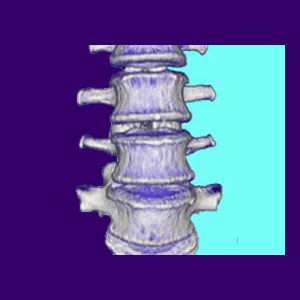
Ankylosing Spondylitis is also called AS, rheumatoid spondylitis or Marie-Strümpell disease. It is a rheumatic inflammatory condition that affects the spinal bones and joints. AS can also affect other joints and organs throughout the body. This condition is a type of arthritis that is far more prevalent in men than women by a margin of 3 to 1. Rheumatoid spondylitis can affect patients of any age and can become a very serious disabling health concern.
AS is one of the few arthritic conditions which can be clearly documented from outside the body. Although the disease itself does not leave visible evidence, it can be easily seen in the way diagnosed patients function and move. Most ankylosing spondylitis sufferers have extremely limited range of motion in affected areas. Many can not turn their heads, while others can barely move their spines at all. Victims often appear stiff and almost fragile, as if a wrong movement will cause them to break.
Of all the back pain conditions which may exist, AS is certainly one of the worst and also one of the most difficult to successfully treat in advanced cases. This essay provides a comprehensive overview of the ankylosing spondylitis condition.
What is Ankylosing Spondylitis?
Ankylosis means a fusion or joining of spinal structures. Spondylitis simply means inflammation of the spine and other affected structures. The name refers to an inflammatory condition of the spinal and sacroiliac joints, leading to the fusion of these structures. Obviously, these areas were designed to allow movement, so the fusion of the bones and joints in this region will cause widespread reduction effective range of motion and sometimes, overall disability.
Not all AS suffers have symptoms in all locations. Some have limited expressions in parts of their back or neck. These patients fare much better than those who have large areas of affected tissue.
Ankylosing Spondylitis Targets
The lower spinal region is the primary target for most cases of spondylitis. However, it can strike anywhere in the back, neck or throughout the entire body. The disease may also affect the heart, eyes, lungs or kidneys. This is especially true in female patients. I have a good friend who has the majority of his pain and disability in his neck, making him completely unable to rotate his head or even look up or down to any functional degree. Nevertheless, his attitude is still fantastic and he lives an active life and holds a good job.
Remember, the spondylitis diagnosis is rarely a sure bet. Many patients do not receive a confirmation immediately, but instead are labeled with AS over time, as other possible causations are eliminated.
Causes of Rheumatoid Spondylitis
The primary cause of this disease seems to be heredity. People inherit the HLA-B27 gene believed to be the prime cause of this condition. Over 90% of patients display an inherited propensity for this condition, testing positive for the HLA-B27 gene. The majority of people with this gene will not develop the disease. Science is still trying to determine the other factors necessary to develop this symptomatic condition.
Some mindbody professionals have theorized that emotional conditions may be contributory and this may be possible, given the age on onset in most patients and the fact that this is one of many autoimmune diseases which have been linked to psychoemotional causations. Investigate the possible causes of spondylitis.
Symptoms of Ankylosing Spondylitis
Pain, fatigue and especially stiffness are the primary manifestations of this condition. Most often, the symptoms start slowly and gradually progress in their intensity. Advanced forms of the disease can cause a curvature in the thoracic spine referred to as kyphosis. This curvature affects the lungs and leaves the patient susceptible to breathing problems and respiratory difficulties. As the disease worsens, it is common for the actual spinal joints to fuse into one solid piece of bone. This leaves the patient particularly inflexible and vulnerable to developing fractured vertebrae.
Other serious symptoms involving inflammation and loss of function can affect the eyes, heart, skin, intestines or kidneys. Read more about the symptoms of spondylitis.
Treatment of Ankylosing Spondylitis
Conservative treatment is usually a program of heat therapy, physical therapy and pain management drugs. Be warned that many of the drugs used to treat muscle pain, stiffness and inflammation have powerful known and unknown side effects. This treatment agenda is designed to expand the range of motion, reduce inflammation and increase cardiovascular capacity. In severe cases, back surgery might be required to stabilize and repair damaged spinal levels or joints. Results of surgical intervention are typically poor.
My previously mentioned friend with AS treats his condition with swimming. In fact, we actually began to talk at the pool where we both swim regularly. He finds the water to be a great benefit for AS and I can believe it. I credit swimming with being the most effective method of care I have found for my own chronic pain. Explore ankylosing spondylitis treatment options.
Suggestions for Spondylitis
AS is a condition that is still largely mysterious to medical science. Doctors are not sure exactly what causes the disease, nor how to prevent it. Treatment is successful in most patients, allowing them to lead relatively normal lives.
The disease usually progresses for about a decade and then the progression slows or ends. If a patient can maintain good results from treatment during the active growth phase of the condition, the patient’s prognosis is good.
If you have been diagnosed with spondylitis, research your options carefully. Many patients have reported excellent results from alternative therapies, such as herbs and acupuncture. Surgery is not the only way to proceed.





